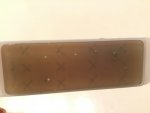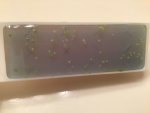@Hip so you are doing the diagnosis on your own, then you send the info to his team, who then create an autovax from your data? How much does it cost?
The clinic require your actual live bacteria in order identify them, and they also need these live bacteria to create autovaccines.
(The exception is certain bacteria like Staphylococcus, which they do not use autovaccines to treat, but off-the-shelf ready-made Staphylococcus vaccines).
I don't think it is completely necessary to identify the bacteria on your dipslides before you send them to the Markov Clinic, as they have their own bacterial identification service.
But it's useful to try to identify your bacteria before you sent them, to ensure that you have sent all the different species of bacteria that are to be found in your urine. If you miss one species, I guess the treatment results may not be as good, but I am not really sure.
When you perform a dipslide test, on any given day, you might get one of the bacteria in your kidneys appearing on the dipslide, but not another. So you may have to perform repeated dipslide tests to "coax" all your bacteria out.
In my case, I found a total of 3 species of bacteria, and it took quite a bit of dipslide testing before I was able to "capture" all 3 bacteria, because they did not all come out at once.
I only knew I had 3 different species because I identified them with chromogenic agar. On the dipslide, one species of bacteria tends to look very similar to another species (though there are some subtle signs that you can use to distinguish them); whereas the chromogenic agar turns different colors, which helps differentiate one bacterium from another.


